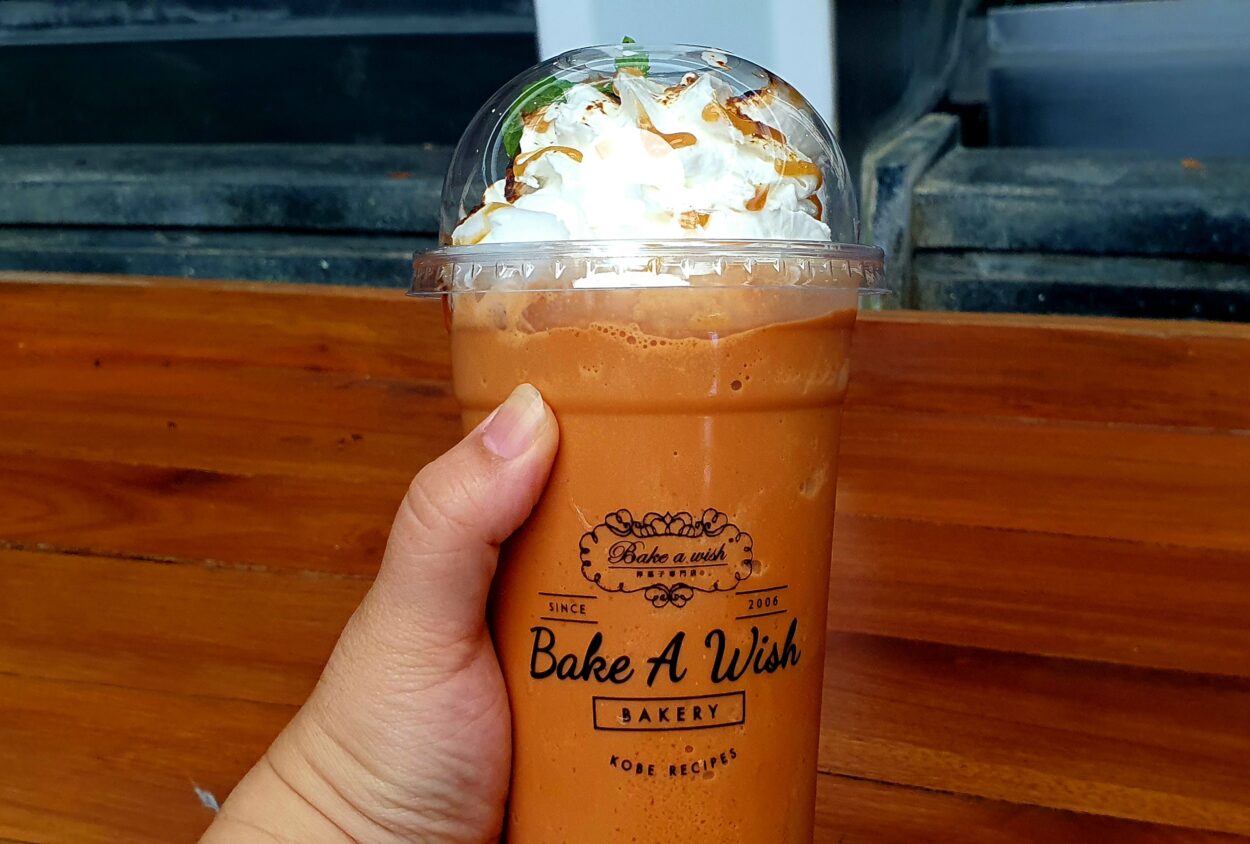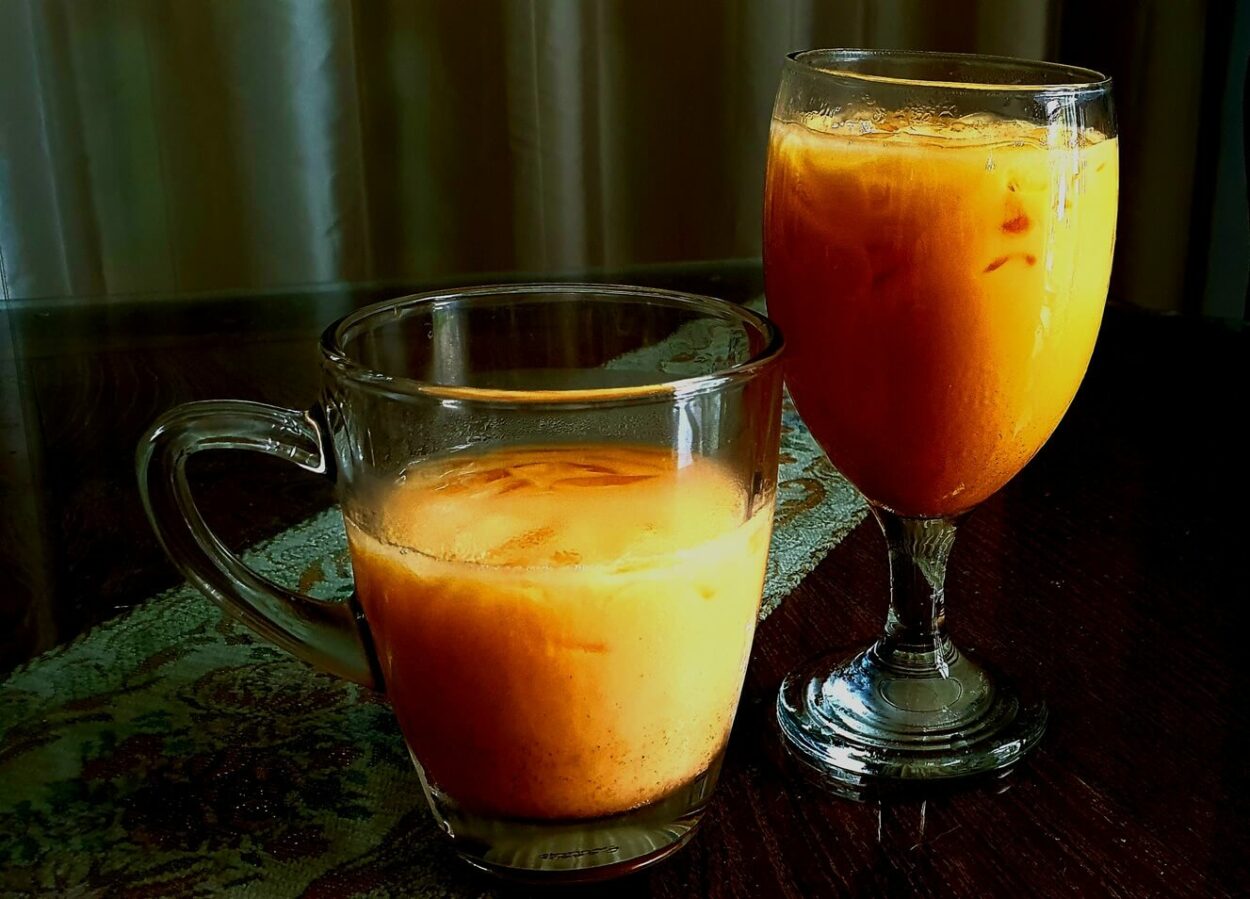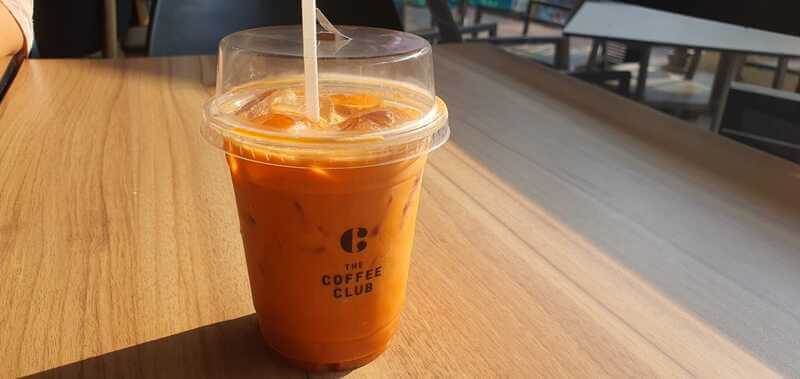Thai tea, which has its roots in the lively streets of Thailand, has become incredibly well-known throughout the world for its distinct and reviving flavor.
The combination and unmistakable orange tint make it an iconic drink. It’s now a common beverage everywhere in the world, from crowded Asian marketplaces to hip cafes in Western nations.
Tea lovers all around the world have fallen in love with it for its distinctive sweet and spicy taste, eye-catching look, and cultural experience it represents.
But not every Thai tea is created equal. Which ingredients are used to make real Thai Tea, and what’s the process? Well, we’ll dig into the world of authentic Thai tea in this article, learning about its background, Original ingredients, components, methods of preparation, and cultural significance.
Come along on this tasty adventure as we learn the secrets of the real Thai Tea experience and find out about Thailand’s original Thai Tea.

Thai Tea’s Brief History
Thai tea, which people usually call Cha Yen in Thailand, has a rich history that is part of the country’s culture.
Field Marshal Plaek Phibunsongkhram, the first prime minister of Thailand, launched a nationalistic push to increase tea consumption among Thais in the 1940s, which is when the beverage’s history can be traced.
Thai tea has been heavily influenced by the cultures to its north, south, east, and west. Thailand’s tea culture was heavily influenced by its proximity to both China and India.
The brewing and mixing methods for tea were brought to Thailand by Chinese immigrants, and Indian influences added aromatic spices.
Thai tea’s popularity grew as its tastes developed. Tourists and locals alike would congregate at street sellers and tea stalls to sample the various flavors of Thai tea.
Thai tea’s distinctive yet familiar flavor quickly made it the country’s most popular drink and an essential ingredient of Thai cuisine.
Thai Tea’s Original Ingredients
Unique ingredients are combined to create the distinctive flavor and appearance of original Thai tea. The essential parts consist of the following:
Black Tea Leaves
Which offer a bold and different flavor, are the basis of Thai tea. Typically, regions like Assam or Ceylon are used to source the tea leaves.
To ensure a robust foundation for the fragrant blend, the tea leaves are steeped until they are strong and tasty.
Sweetened Condensed Milk
The creamy, sweet flavor of Thai tea is one of its distinguishing features. The coffee is given sweetened condensed milk, which gives it a rich texture and caramel-like sweetness.
This ingredient gives the tea a delicious, velvety texture and counteracts the bitterness that it naturally has. It’s also typical to use evaporated milk or half-and-half to give the beverage a hint of silkiness.
Sugar
To increase the sweetness of Thai tea and create a balanced flavor profile, more granulated sugar is frequently added.
Spices and Flavorings
Thai tea is frequently infused with spices like star anise, cardamom, and tamarind to add aromatic notes and depth of taste.
Each sip is a pleasure, thanks to the depth that these spices add to the beverage. These herbs and spices add to the tea’s aromatic profile and produce a captivating fusion of flavors that linger on the palate.
| Ingredients | Quantity |
| Water | 4 cups |
| Black tea | 4 Bags |
| Cardamom | 4-5 pods |
| Cinnamon | 1 stick |
| Star anise | 1-2 pods |
| Sugar | 1 cup |
| Evaporated milk | 1 cup |
| Ice cubes |

The Technique of Making Real Thai Tea
Drinking Thai tea is more than simply a pleasant experience; it’s like being transported away to the vibrant streets of Thailand, where exotic flavors dance and tempt your taste senses.
The charm of Thai tea can only be experienced by those who have mastered the technique of making it. We’ll break down the process of preparing authentic Thai tea so you can brew a cup of liquid gold that does justice to this cherished drink.
- First, bring a pot of water to a boil. Once the water starts to boil, add as many black tea leaves as you want. Adding more tea to the water will make the drink stronger.
- Let the tea leaves simmer for a few minutes so that their strong flavors and fragrant essences can come out.
- While the tea is making, use this time to add your chosen spices to the water. Add a pinch of cardamom, a dash of star anise, and a touch of tamarind. Let their complicated flavors blend with the tea’s essence.
- When the tea is brewing, strain out the tea leaves and spices so that you only get a flavorful drink. Don’t keep the leftovers because they no longer smell good.
- As the finishing touch, add sugar and the pièce de résistance, which is sweetened condensed milk. Pour a big stream of this velvety liquid into your tea and watch it swirl and mix, bringing together the flavors and textures in a way that works well.
- If you want a chilled treat, pour your Thai tea over ice cubes in a glass and enjoy the way the coolness and creaminess go together. If you prefer warmth, you can serve the tea as is and let its comforting hug wrap around you.
A Visual and Gustatory Treat
Spices like ground cardamom or fresh mint leaves are often sprinkled on top as a garnish to add a burst of flavor.
Thai tea is often served in tall glasses so that the layered tea and vibrant orange color are better noticed. This beverage’s contrast between dark tea and creamy milk makes for a visual and gustatory treat.

Original Thai Tea’s Distinctive Characteristics
Thai tea stands out for its distinctive flavor, which is a well-balanced blend of black tea, spices (such as star anise and cardamom), and sweetened condensed milk. The final drink has a flavor profile that’s sweet and mildly spicy and pleasant and satisfying.
Cha Yen’s eye-catching orange hue makes it visually beautiful and readily recognizable. Its attractiveness is enhanced by the brilliant hue, which is frequently attained by adding food coloring or natural colorants like butterfly pea flowers. This makes it a popular choice for your Instagram-worthy images.
Thai tea is versatile in more ways than just as a simple beverage. You can use its flavor for various culinary creations, including ice creams, pastries, boba (bubble) teas, smoothies, and even cocktails.
Thai tea can accommodate a variety of tastes and preferences because of its versatility. Thai tea has an unusual and intriguing allure for people who are not familiar with Thai food.
If you’re interested in culinary explorations, they offer a glimpse into the many flavors and cultural diversity of Thailand, making for an intriguing experience.
Thai tea is frequently served over ice, which makes it a delightful and thirst-quenching choice, especially in warmer regions or during the summer. It’s a well-liked option for combating heat because of its cooling qualities.
Ease of Accessibility
Thai tea is now more widely available around the world as a result of the growing globalization of food and drinks.
It’s available at Thai restaurants, specialty tea shops, as well as common cafes and supermarkets, allowing people from various places to sample it and try it out.
The Authenticity of Thai Tea
Thai tea is a staple in homes, local markets, food carts, and restaurants all around Thailand and has a significant cultural presence there.
Thai tea has become more widely available outside of Thailand as a result of its rising popularity. Thai restaurants, tea stores, cafes, and even pre-packaged forms all carry it.
Thai tea is brewed in an attempt to preserve its unique flavors and character, ensuring that it stays loyal to its cultural roots even though certain alterations and variations may exist.
Thai tea drinkers and businesses that want to keep it authentic try to use high-quality ingredients and old-fashioned recipes. This commitment helps keep Thai tea’s original taste and experience alive for tea fans everywhere.
Flavors Besides The Traditional Thai Tea
Original Thai tea’s authentic recipe remains the same to this date. However, people have enhanced it and come up with their own recipes to create new kinds of drinks. Some of the famous drinks and how the original Thai tea’s ingredients changed are listed below:
| Thai Tea Variations | Description |
| Classic Thai tea | Traditionally, black tea, sweetened condensed milk, sugar, and spices are used to make chai tea. |
| Thai Green Tea | Green tea leaves, sweetened condensed milk, sugar, and spices are used to make a lighter variation of Thai tea. |
| Thai Milk Tea with Boba | Thai tea is served with chewy boba pearls, which give the drink a pleasant and sensory touch. |
| Thai Tea Frappe | A blended, iced variation of Thai tea, frequently drizzled with added sweetened condensed milk and whipped cream. |
| Thai Tea Latte | It’s Thai tea that has been modified to be creamy and frothy, frequently with steamed milk and a dash of spices |
Thai Tea’s Cultural Importance
Thai tea has cultural importance in Thailand in addition to tantalizing taste sensations. It’s frequently drunk as a cool beverage on hot summer days to provide relief from the heat.
Thai tea is also an integral part of Thai cuisine and is frequently consumed with dishes like Pad Thai or Green Curry.
The drink has come to symbolize Thai hospitality, with people commonly offering it to visitors as a sign of goodwill.
Spirits of Original Thai Tea In Thailand
Original Thai tea is a great example of how interesting ethnic food can be because of its interesting background, unique flavors, and attractive presentation.
Thai tea is a great way to get a feel for Thai culture and food, whether you’re drinking it in a cozy café around the world or on a busy street corner in Bangkok.
If we know where it comes from, what it’s made of, and how to make it, we can really appreciate the skill that goes into making true Thai tea.
So, have a cup of real Thai tea and lose yourself in the interesting world of Thai food traditions!
Conclusion
- Thai tea is one of Thailand’s most famous drinks. It is known for its sweet and spicy taste and orange color.
- It’s a sweet, creamy drink with a texture like caramel and a taste like caramel. Spices like star anise, cardamom, and tamarind are mixed in to make it smell and taste better.
- Thai tea is now available in more places around the world because food and drinks are becoming more globalized.
- It’s a staple in Thailand, and more places outside of the country now sell it. It has a unique blend of black tea, sweetened condensed milk, and spices.